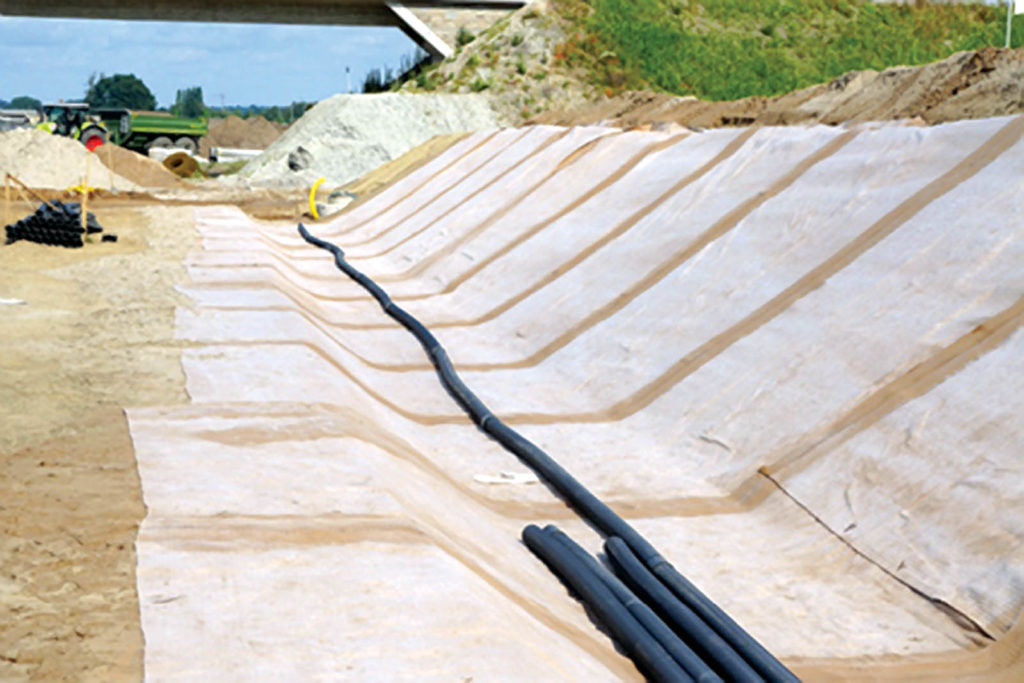
Q: We are confused with the term “impregnation” as it relates to seaming geosynthetic clay liners (GCLs). There are two types of impregnations: (1) edge impregnation and (2) complete nonwoven (cap layer) impregnation of GCLs. How does a manufacturer do this?
I am trying to understand what effect a tongue-and-groove surface might have on the test results for a woven material. Can you provide a quick explanation or point me in the direction of some literature I could read to understand this better?
A: In our manufacturing process, we have two ways of adding bentonite into the cover nonwoven geotextiles during manufacturing, as follows:
We add it prior to the needlepunching process, either on the edge in a width of 20 inches (50 cm) or over the entire width. During the needlepunching process, the bentonite then fills the nonwoven pore space.
For some specific products, we add bentonite after the needlepunching process in a special shaking process to the 20-inch (50 cm) wide edges, also ensuring the filling of the nonwoven pore space.
The edge bentonite filling is called edge bentonite impregnation, while the bentonite over the entire area is called completed nonwoven (cap layer) bentonite impregnation.
The edge bentonite impregnation during manufacturing allows the sealing of edge overlaps without any supplemental bentonite needed to be added in the field. Only the width overlaps (end of the roll) must be treated in the field. The complete bentonite treatment of the cap nonwoven ensures that all overlaps self-seal in the field. No supplemental bentonite addition in the field is necessary.
 TEXTILES.ORG
TEXTILES.ORG


